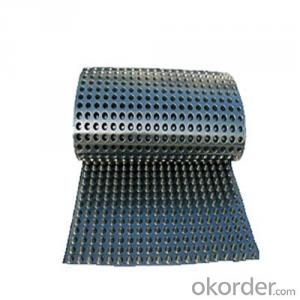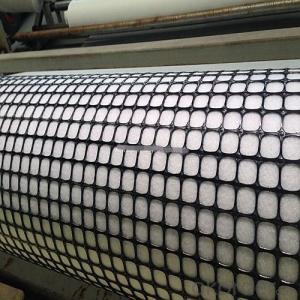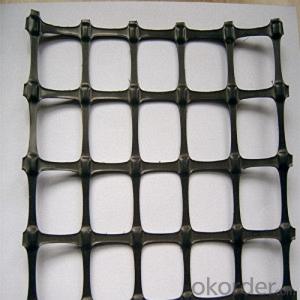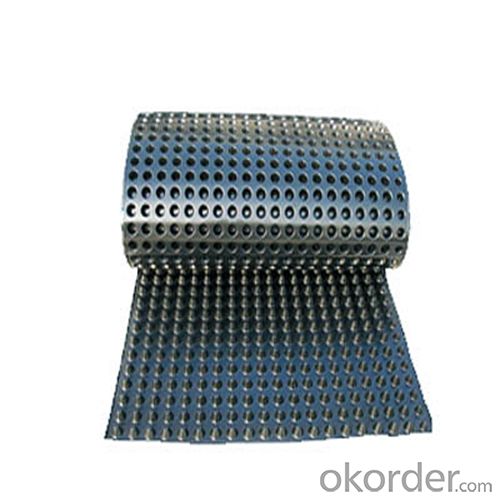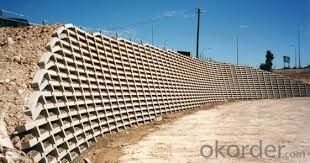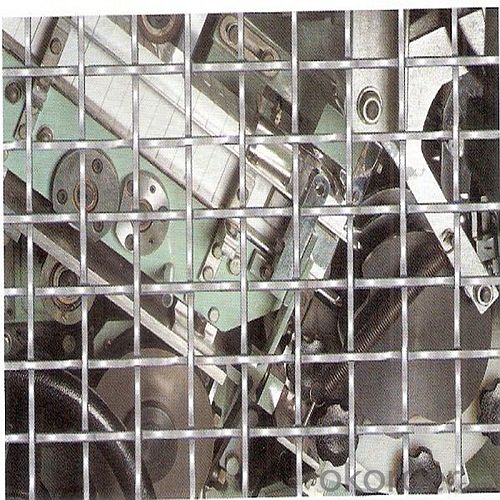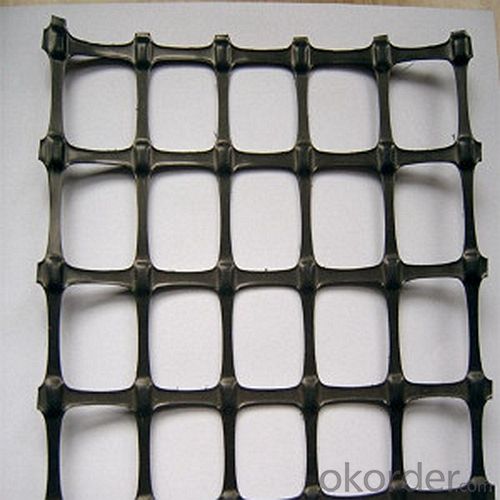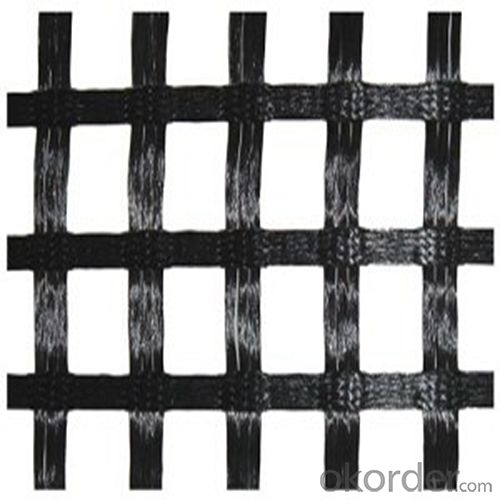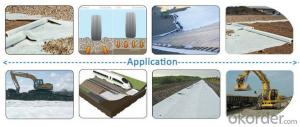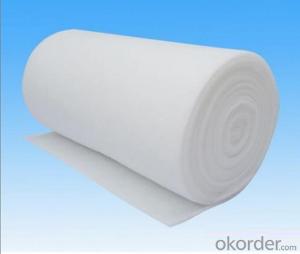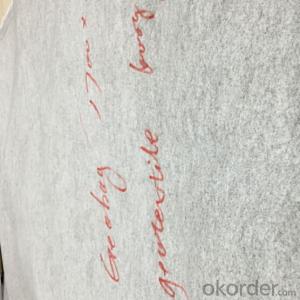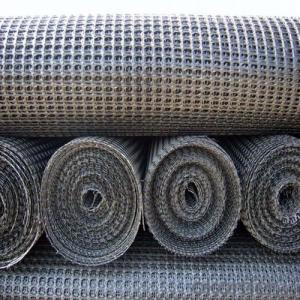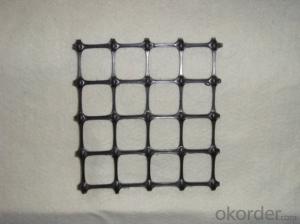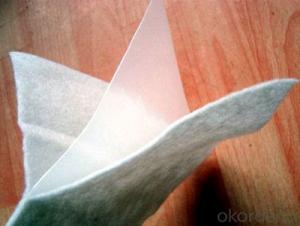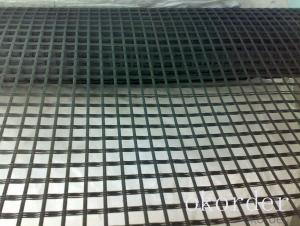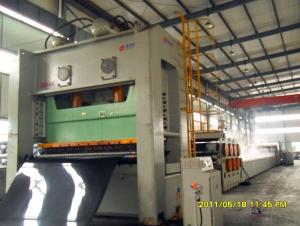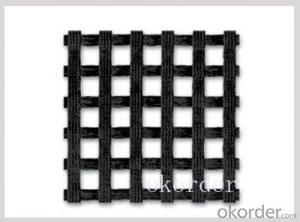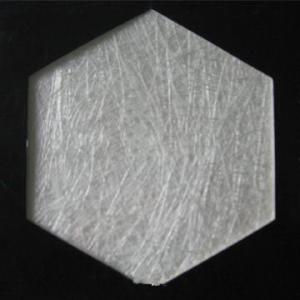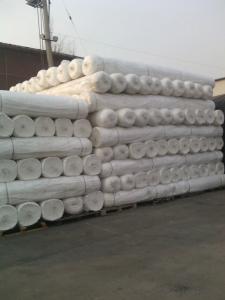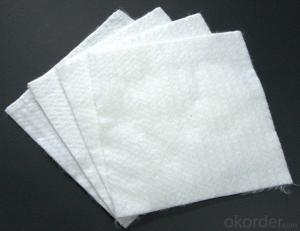Hemp Geotextile Uni-Axial Geogrids for Slopes Used in Civil Construction
- Loading Port:
- China main port
- Payment Terms:
- TT OR LC
- Min Order Qty:
- 1000 m²
- Supply Capability:
- 1000000 m²/month
OKorder Service Pledge
OKorder Financial Service
You Might Also Like
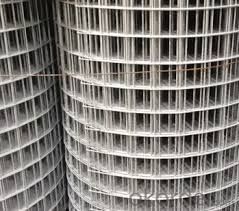
Product Introduction
Fiberglass geogrid is a kind of new favorable earthwork base material to strengthen the road surface and roadbed. This product is composed of fiberglass filaments that are coated with an inorganic sizing agent
Features:
1. High tensile strength in warp and across directions
2. Low Elongation
3. High flexibility
4. High and low temperature resistance
In case of water streams construction, geogrid application allows planting trees and shrubs along the banks protecting them from ablation. Geogrids are an economical solution for filling water stream base and creates almost an ideal surface for laying down a water resistant layer.
We can produce pavement fiberglass geogrid of good quality with tensile strength of 30x30kn--300x300kn/m. mesh size can be 25.4x25.4mm or 12.7x12.7mm ,50.8x50.8mm.
Packaging & Shipping
Packing: PLASTIC FILM INSIDE, AND WOVEN BAG OUTSIDE
Shipping: About 15 days after receipt the deposit
geotextile fabric
permeability,filtration,easy for construction
ISO and CE certificate
Good quality and competitive price
After-sales service
1.In order to provide customers with comprehensive technical support,we will provide technical and other related information upon request in a timely manner.
2.In required,we will appoint specialized technicians to the construction site to give technical trainings to construction people,and offer technical guidance throughout the whole construction process.
3.For damage due to shipment and delivery,after we receive the complaint,we will check the issure through provided pictures and videos.If our responsibility is confirmed,we wil offer free replacement.
4.When the construction is completed,as your request,our technical staff may participate in the final acceptance.
FAQ:
Q: What kind of payments does jenor support?
A: T/T, L/C, Cash are accepted.
Q: Do you charge for the samples?
A: Accordeing to our company policy, the samples are free, we only charge the freight fee. And we will return the freight fee during the next order.
Q: Can you produce according to customers' design?
A: Sure, we are professional manufacturer, OEM and ODM are both welcome.
Q: Do you have other products?
A: Yes, please check the pictures:
- Q: What are the different applications of geotextiles in agriculture?
- Geotextiles have several applications in agriculture, including erosion control, soil stabilization, filtration, and drainage. They are commonly used to prevent soil erosion by acting as a barrier between the soil and water, helping to retain moisture and nutrients. Geotextiles also aid in soil stabilization by providing reinforcement and preventing soil movement. Additionally, they act as filters, allowing water to pass through while preventing the movement of fine particles. Lastly, geotextiles can be used for drainage purposes, facilitating the removal of excess water from agricultural fields.
- Q: What are the different design considerations for geotextile applications?
- Some of the different design considerations for geotextile applications include the type and strength of the geotextile material, its permeability and filtration characteristics, its durability and resistance to degradation, the required tensile strength and elongation properties, as well as its installation and maintenance requirements. Other factors to consider include the anticipated loadings and stresses on the geotextile, the expected lifespan of the application, and any specific project requirements or environmental considerations.
- Q: What are the key factors affecting the durability of geotextiles?
- The key factors affecting the durability of geotextiles include exposure to environmental conditions such as ultraviolet (UV) radiation, temperature variations, moisture, and chemical exposure. The quality of the geotextile material and its resistance to degradation, abrasion, and puncture also play a crucial role in determining its durability. Proper installation, maintenance, and adherence to design specifications are additional factors that can impact the longevity of geotextiles.
- Q: How to apply geotextile soil
- Directly laying Huazhi geotextile material manufacturers
- Q: How do geotextiles help with drainage?
- Geotextiles help with drainage by allowing water to pass through their porous structure while preventing soil particles from clogging the drainage system. This enables efficient water flow, reduces soil erosion, and helps maintain the stability and longevity of the drainage infrastructure.
- Q: How do geotextiles help in groundwater drainage?
- Geotextiles help in groundwater drainage by allowing water to pass through while preventing soil particles from clogging the drainage system. They act as a filter, providing a barrier against soil erosion and maintaining the permeability of the drainage system, thus improving the overall efficiency of groundwater drainage.
- Q: Can geotextiles be used in tunnel construction?
- Yes, geotextiles can be used in tunnel construction. Geotextiles are often used as a reinforcement material in underground structures like tunnels to provide stability, prevent soil erosion, and improve drainage. They can be used in various applications such as tunnel lining, separation of different soil layers, and filtration of water or gases. Geotextiles offer numerous benefits in tunnel construction, including increased safety, reduced maintenance, and enhanced durability.
- Q: How do geotextiles affect soil settlement?
- Geotextiles can significantly affect soil settlement by providing reinforcement and stabilization. These synthetic materials help distribute the loads applied to the soil, reducing settlement and preventing soil movement. They also improve drainage and filtration, allowing water to pass through the soil more easily, minimizing the potential for settlement due to water accumulation. Overall, geotextiles play a crucial role in controlling soil settlement and maintaining the stability of various structures.
- Q: Can geotextiles be recycled?
- Yes, geotextiles can be recycled. They are typically made from synthetic materials such as polypropylene or polyester, which can be melted down and reused to create new geotextile products. Recycling geotextiles helps reduce waste and promotes sustainability in the construction and environmental industries.
- Q: Are geotextiles resistant to extreme temperatures?
- Yes, geotextiles are generally resistant to extreme temperatures. They are designed to withstand a wide range of environmental conditions, including high and low temperatures, without significant degradation or loss of performance.
Send your message to us
Hemp Geotextile Uni-Axial Geogrids for Slopes Used in Civil Construction
- Loading Port:
- China main port
- Payment Terms:
- TT OR LC
- Min Order Qty:
- 1000 m²
- Supply Capability:
- 1000000 m²/month
OKorder Service Pledge
OKorder Financial Service
Similar products
Hot products
Hot Searches
Related keywords
